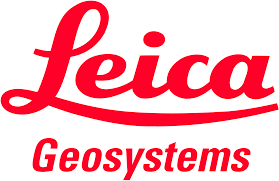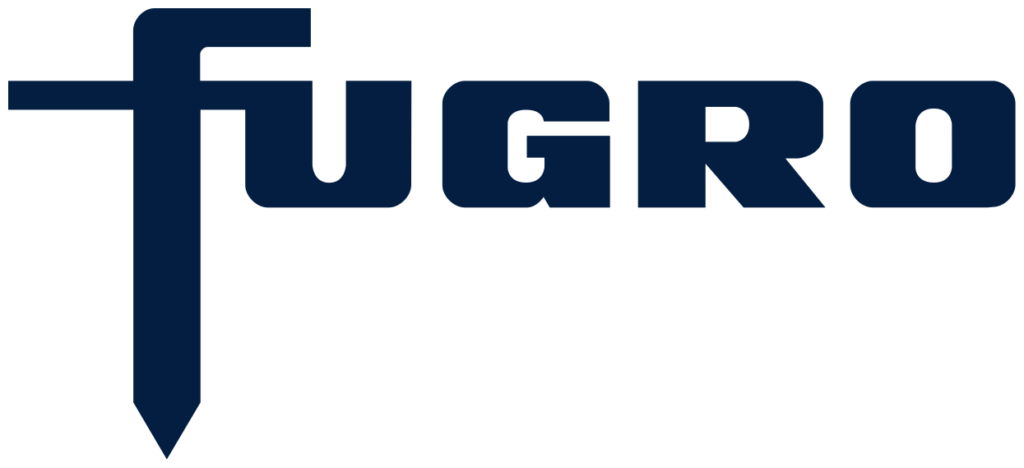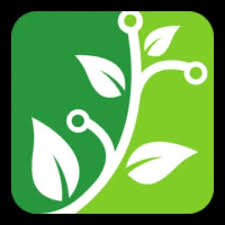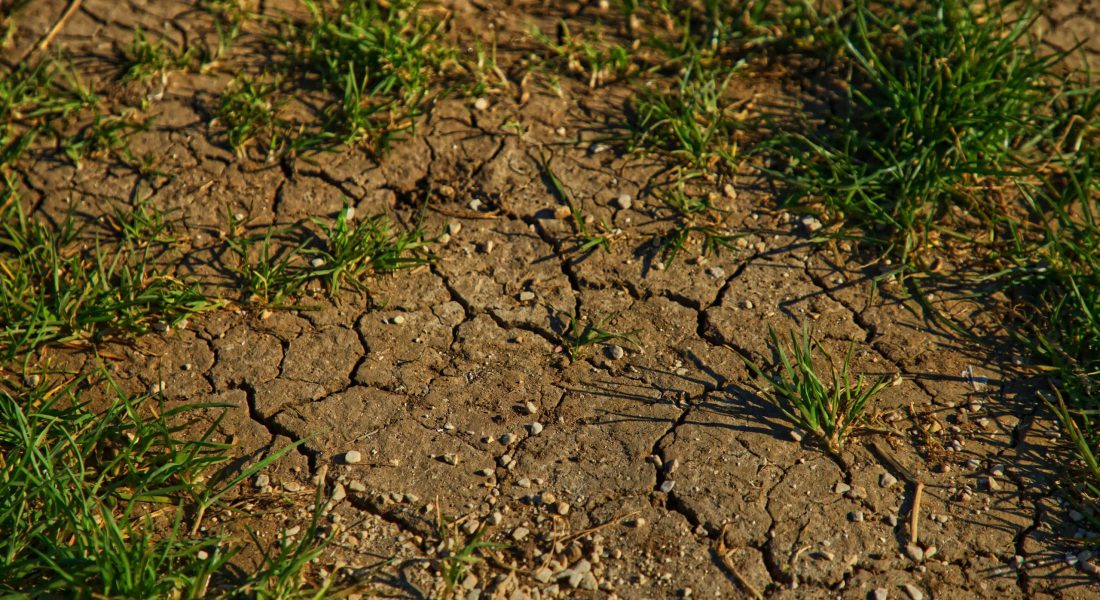You know that sinking feeling when you look out over your land after a heavy rain and see gullies where there used to be smooth topsoil? Soil erosion isn’t just an annoyance-it’s a thief, quietly stealing away the nutrient-rich earth that keeps your crops thriving. But here’s the good news: in 2025, we’ve got some seriously smart tools from top companies that make spotting and stopping it easier than ever. These aren’t your grandpa’s erosion pins; we’re talking AI-powered platforms, drone swarms, and satellite eyes in the sky that catch problems early, so you can act fast and keep your soil-and your profits-intact. Let’s dive into the standout options that are changing the game for farmers and land managers everywhere.

1. FlyPix AI
At FlyPix, we handle a lot of imagery from satellites, drones, and planes, and one way we put that to work is spotting soil erosion before it gets out of hand. Users upload their images, and our AI sifts through them to pick out changes like bare patches or gully formations that show where the soil’s washing away. It’s all about training models on specific markers-think exposed earth after rains or shifted contours on slopes-so the system learns to flag those spots quickly, pulling everything into a dashboard for easy review.
What we like about this setup is how it lets folks build custom detectors without diving into code; just annotate a few examples, and the model starts outlining erosion risks in new shots. We’ve seen it help map out affected areas in fields or along riverbanks, where manual checks would take days. The output ties into analytics that track changes over time, giving a sense of how erosion moves with weather or land use, which makes planning fixes a bit less like guesswork.
Key Highlights:
- Detects bare soil and gully patterns in aerial images
- Allows custom model training via user annotations
- Integrates multispectral data for deeper surface analysis
- Provides change detection for tracking erosion progress
Who it’s best for:
- Farmers watching slope runoff in crop fields
- Environmental consultants mapping riverbank shifts
- Land planners assessing post-storm damage
Contact Information:
- Website: flypix.ai
- Phone: +49 6151 2776497
- Email: info@flypix.ai
- Address: Robert-Bosch-Str. 7, 64293 Darmstadt, Germany
- LinkedIn: www.linkedin.com/company/flypix-ai

2. Fengtutec
Catching soil runoff in the act can feel like chasing shadows, especially when you’re stuck trudging through fields to check erosion manually. This system swaps that grind for automated sensors that quietly track water flow and sediment levels right where the soil starts slipping. With open-channel flowmeters measuring runoff volumes and sediment sensors sampling water content, it feeds steady data into a processor that logs changes without needing constant oversight-perfect for keeping tabs on small watersheds or test plots.
What makes it handy is how it pulls that data into clear, spatio-temporal maps through a telemetry terminal, showing exactly where erosion is carving away. Built from years of field testing, the setup holds up in tough conditions, alerting users when thresholds spike. It’s like having a reliable lookout that doesn’t mind the weather, letting you focus on fixing the problem rather than hunting for it.
Key Highlights:
- Tracks runoff and sediment automatically to reduce fieldwork
- Uses water separators and sample chambers for accurate detection
- Delivers data via RS-485 for seamless integration
- Designed for small-scale watersheds with easy setup
Who it’s best for:
- Researchers studying ecological changes in test plots
- Small farmers monitoring drainage after heavy rains
- Environmental techs needing consistent erosion data
Contact Information:
- Website: www.fengtutec.com
- Phone: +86 15898932201
- Email: info@fengtutec.com
- Address: No. 155 Optoelectronic Industry Accelerator, Gaoxin District, Weifang, Shandong, China
- Facebook: www.facebook.com/emily.wang.150260

3. GAOtek
Ever tried eyeballing a field to guess where the soil’s giving way? These testers cut through the guesswork, measuring stuff like moisture, pH, and compaction with portable probes or IoT sensors that don’t make you overthink the process. Whether you’re poking around with a handheld unit for quick checks or setting up networked sensors for ongoing scans, they reveal shifts in soil makeup that hint at erosion risks before they worsen.
The GPS integration is a nice touch, turning raw data into maps that pinpoint trouble spots across a field. It’s practical for tying erosion patterns to bigger decisions, like tweaking irrigation to keep soil in place. Users like how the range-from simple probes to full-on analyzers-fits different needs without forcing you into overly complex gear. The data comes together in reports that actually help plan fixes, making it easier to keep the ground steady.
Key Highlights:
- Measures compaction and density to spot stability issues
- Offers portable units with LED displays for instant reads
- Includes GPS IoT for mapping erosion-prone areas
- Works for both one-off checks and long-term monitoring
Who it’s best for:
- Ag consultants crafting soil health strategies
- Construction crews checking site erosion risks
- Eco-monitoring groups tracking compliance data
Contact Information:
- Website: gaotek.com
- Phone: 1-877-585-9555
- Email: sales@gaotek.com
- Address: 244 Fifth Avenue, Suite A31 Manhattan, New York, 10001 USA

4. Airbus
Erosion from above tells a different story-not just sudden washouts but slow, creeping losses across wide landscapes. This tool uses optical and radar satellite feeds layered over terrain models to spot changes in elevation or vegetation that signal soil loss. Its analytics platform crunches the imagery, mapping out land-use shifts or bare patches that feed into erosion predictions, all accessible through a user-friendly ordering system.
The radar’s ability to see through clouds is a game-changer, ensuring steady data flow, while elevation models help track gullies or runoff patterns before they deepen. It’s intriguing how it blends historical imagery with fresh scans for change detection that feels almost like seeing the future. The result is clean map layers you can plug into your own systems, turning satellite views into practical insights for managing soil loss across big areas.
Key Highlights:
- Uses stereo imagery for 3D tracking of elevation shifts
- Radar ensures consistent monitoring in any weather
- Analytics flag vegetation loss tied to erosion risks
- Allows custom-tasked data orders via platform
Who it’s best for:
- Land managers overseeing large forestry or coastal zones
- Policy planners studying regional erosion patterns
- Ag firms monitoring watershed-wide impacts
Contact Information:
- Website: space-solutions.airbus.com
- LinkedIn: www.linkedin.com/company/airbus-geospatial-and-secure-connectivity-solutions

5. Leica Geosystems
Spotting erosion along coastlines or riverbanks often means dealing with tricky terrain that shifts underfoot, but topographic LiDAR changes that by scanning from above the water down to the seabed. Operators position the system on boats or drones to capture detailed point clouds that reveal elevation drops or sediment buildup, helping map out where the ground is wearing thin. The data gets processed into models showing erosion stages, so you can trace back to risks like wave action or runoff without sifting through endless manual surveys.
It’s interesting how the below-water capabilities fill in gaps that ground-based tools miss, blending seamless transitions from dry land to submerged areas for a fuller picture. Users find the integration with software straightforward, turning those dense datasets into visuals that highlight patterns-like a sudden gully forming after storms-without overwhelming the workflow. In the end, it boils down to having reliable scans that inform tweaks to barriers or planting, keeping the landscape from slipping away unnoticed.
Key Highlights:
- Scans coastal areas and underwater surfaces for elevation changes
- Produces point clouds for mapping sediment shifts
- Works from boats or drones to cover hard-to-reach spots
- Links data to software for erosion stage assessments
Who it’s best for:
- Coastal engineers tracking beachfront changes
- River managers spotting bank undercuts
- Surveyors needing seamless land-to-water models
Contact Information:
- Website: leica-geosystems.com
- Phone: +41 71 727 3131
- Address: Heinrich-Wild-Strasse 9435 Heerbrugg Switzerland
- LinkedIn: www.linkedin.com/company/leica-geosystems
- Facebook: www.facebook.com/LeicaGeosystems
- Twitter: x.com/LeicaGeosystems
- Instagram: www.instagram.com/leicageosystemsag

6. Fugro
When you’re out on the water assessing how currents chew at the bottom, traditional grabs just don’t cut it for fine details-enter devices like this one from Fugro’s research lineup, designed to probe erosion right in place. Dropped from a vessel, it measures soil resistance under flow, using sensors to log how particles dislodge and migrate, all while handling the push of waves or tides. The setup captures real-time metrics on sediment thresholds, feeding into analyses that predict where scour might undermine anchors or pipelines.
What catches the eye is the focus on in-situ testing, avoiding the mess of hauled-up samples that lose context on the way to a lab. Field crews appreciate how it pairs with penetrometers for layered insights, like spotting weaker zones prone to washouts. It’s a practical add-on for bigger surveys, where understanding erosion feeds directly into designs that hold firm against the sea’s pull, without second-guessing the ground truth.
Key Highlights:
- Probes seabed resistance to flow for particle loss tracking
- Integrates sensors for wave and tide impact logging
- Supports direct design interpretations from test data
- Complements penetrometers for depth-specific reads
Who it’s best for:
- Offshore developers checking pipeline stability
- Marine geotech pros evaluating scour around structures
- Survey teams in dynamic tidal zones
Contact Information:
- Website: www.fugro.com
- Phone: +1 905 567 2870
- Address: 6733 Mississauga Road Suite #400, Mississauga, ON L5N 6J5
- LinkedIn: www.linkedin.com/company/fugro
- Facebook: www.facebook.com/fugro
- Twitter: x.com/fugro
- Instagram: www.instagram.com/fugro

7. Deltares
Lab work on soil strength can drag if you’re simulating real-world wear, but this rotary device spins up controlled tests to mimic how water scours polders or levees. Placed in a setup with soil cores, it applies steady flow while tracking suction buildup and material breakdown, giving a window into erosion rates under varying pressures. The output logs progression from intact layers to fragmented bits, helping refine models that match field observations without endless trial runs.
One thing that stands out is the suction monitoring-it adds a layer to why some clays hold longer than others, tying lab results to actual delta conditions where dryness cracks the surface. Researchers use it to tweak erosion forecasts, spotting fatigue in protective covers before they fail. It’s the kind of gear that bridges theory and practice, letting you test scenarios like prolonged rains on a dike without waiting for nature to oblige.
Key Highlights:
- Simulates flow-induced scour on soil samples
- Monitors suction changes during breakdown
- Captures erosion progression for model calibration
- Handles clay mineral effects on resistance
Who it’s best for:
- Levee designers testing cover durability
- Soil scientists studying delta sediment behavior
- Flood risk analysts validating protective layers
Contact Information:
- Website: www.deltares.nl
- Phone: +31 (0)88 335 8273
- Email: events@deltares.nl
- Address: 2600 MH Delft, The Netherlands Boussinesqweg 1 2629 HV Delft
- LinkedIn: www.linkedin.com/company/deltares
- Facebook: www.facebook.com/DeltaresNL
- Instagram: www.instagram.com/deltares

8. Digital Earth Africa
Keeping an eye on soil erosion across vast regions like savannas or river basins can feel like trying to watch every grain of sand on a beach. This platform tackles that by pulling in satellite imagery to map out land cover changes, spotting areas where bare soil or runoff scars signal erosion risks. The system processes data into usable layers, showing shifts in vegetation or surface stability, which helps planners see where the ground is giving way without needing to trek across every hectare.
What’s neat is how it prioritizes open access, so users from local councils to researchers can dig into the same high-resolution imagery without jumping through hoops. The setup leans on partnerships to keep data fresh and relevant, turning raw satellite feeds into maps that highlight erosion-prone zones. It’s a practical way to track changes over time, especially in areas where field visits are tough, giving a clear view of how landscapes are holding up or wearing down.
Key Highlights:
- Maps land cover changes to identify erosion risks
- Processes satellite data into accessible visual layers
- Focuses on open access for broad user availability
- Updates regularly through regional partnerships
Who it’s best for:
- Policy makers planning land use in rural regions
- Researchers studying erosion across large areas
- Community groups monitoring local environmental shifts
Contact Information:
- Website: digitalearthafrica.org
- Email: info@digitalearthafrica.org
- Address: 20 Baker St, Rosebank, Johannesburg, 2196
- LinkedIn: www.linkedin.com/company/digitalearthafrica
- Twitter: x.com/DEarthAfrica

9. Swift Geospatial
Pinpointing where erosion is eating away at a forest or farmland often starts with getting a bird’s-eye view, and this tool makes that happen with satellite and drone imagery tailored for quick analysis. Users upload or access data, which the platform crunches into reports showing soil exposure or slope changes, helping spot trouble before it turns into gullies. It’s designed to be straightforward, so you don’t need a PhD to figure out what the data’s saying about your land.
The focus on accessibility stands out-data gets presented in clear visuals, like change detection maps, that make it easier to act on erosion risks without drowning in technical details. It’s handy for tracking seasonal shifts, like how heavy rains strip away topsoil, and the platform’s open-data ethos means you’re not locked out by hefty fees. For folks needing to keep tabs on dynamic landscapes, it’s a solid way to stay ahead of erosion’s slow creep.
Key Highlights:
- Analyzes satellite and drone data for soil exposure
- Delivers clear change detection maps for erosion tracking
- Emphasizes accessible data without high costs
- Supports seasonal monitoring of landscape changes
Who it’s best for:
- Foresters checking soil stability in timber zones
- Farmers watching runoff on sloped fields
- Conservationists tracking erosion in sensitive areas
Contact Information:
- Website: swiftgeospatial.solutions
- Phone: +27 12 756 4950
- Email: info@swiftgeospatial.solutions
- Address: CSIR, Building 4, 1st Floor Meiring Naudé Rd Brummeria Pretoria 0184
- Instagram: www.instagram.com/swiftgeospatial

10. AI Garden Planner
Figuring out which plants hold the soil best on a sloped yard isn’t always straightforward, especially when weather patterns keep changing the game. This advisor steps up by looking at your local climate, soil type, and weather to suggest plants that fit right in, complete with care tips and planting timelines. It points out options with strong roots that help keep erosion in check, turning a basic garden plan into something that actually stabilizes the ground without much guesswork.
The way it ties in soil preferences from identified plants feels like a smart shortcut, letting you swap out erosion-prone spots with better choices before things slide. Users pull in photos for quick IDs, getting guides that cover everything from watering to health checks, which all feed back into erosion-smart designs. It’s a handy setup for blending aesthetics with practical soil protection, especially when you’re tweaking layouts on the fly.
Key Highlights:
- Analyzes climate and soil for tailored plant suggestions
- Includes care schedules to maintain soil stability
- Identifies plants from photos with soil preference details
- Generates plans focused on erosion-resistant choices
Who it’s best for:
- Homeowners planning sloped garden makeovers
- Landscapers selecting root-strong plants
- Gardeners in variable weather zones
Contact Information:
- Website: aigardenplanner.com
- Email: contact@aigardenplanner.com
- Address: Ferenciek tere 2. fszt 1053 Budapest Hungary
- Facebook: www.facebook.com/people/AIGardenPlannercom
- Twitter: x.com/aigardenplanner
- Instagram: www.instagram.com/aigardenplanner

11. Soil Scout
Dealing with fields where overwatering turns the top layer into a slippery mess means constantly checking moisture levels, but these buried sensors handle that quietly underground. Set up in grids, the units track water content and oxygen in real time, sending alerts when conditions tip toward erosion risks like saturation. It gives a steady read on how irrigation affects the soil, helping adjust watering to avoid runoff that strips away nutrients.
One observation is how the oxygen monitoring adds a layer to spotting compacted areas prone to washing out, pairing with moisture data for a fuller picture of soil health. Turf managers use it to time applications that keep roots firm, reducing the chance of bare patches where erosion starts. The wireless design means no digging up wires for checks, making it easier to monitor spots like slopes or high-traffic zones without disrupting the surface.
Key Highlights:
- Tracks moisture to prevent overwatering and runoff
- Monitors oxygen for soil compaction insights
- Provides real-time data via wireless setup
- Supports irrigation adjustments for stable conditions
Who it’s best for:
- Farmers optimizing field water use
- Golf course maintainers handling turf slopes
- Sports field crews tracking high-use areas
Contact Information:
- Website: soilscout.com
- Phone: +358 40 8201 709
- Email: jalmari.talola@soilscout.com
- Address: Vetokuja 4 01610 Vantaa Finland
- LinkedIn: www.linkedin.com/company/soil-scout
- Facebook: www.facebook.com/soilscout
- Twitter: x.com/Soil_Scout
Conclusion
Soil erosion doesn’t play favorites-it can hit a small garden, a sprawling farm, or a coastal bluff without much warning. The tools we’ve looked at here tackle that challenge in different ways, from sensors buried in the dirt to satellites scanning from above, each giving a piece of the puzzle to keep land steady. Some dive deep into soil health with real-time data, others map out vulnerable spots over wide areas, and a few even suggest plants to hold things together. It’s kind of like assembling a toolbox-you pick what fits the job, whether you’re out in the field daily or planning from an office.
What ties them all together is how they make erosion less of a guessing game. No single approach covers every angle, but mixing ground-level checks with aerial views or lab tests can paint a clearer picture of where things are slipping. For anyone dealing with soil loss, the trick is matching the tool to your patch of earth-slopes, weather, and budget all play a part. Dig into what each offers, test a few if you can, and you’ll find something that helps keep the ground under your feet where it belongs.
